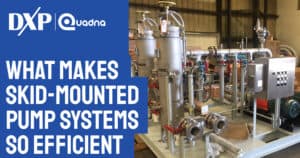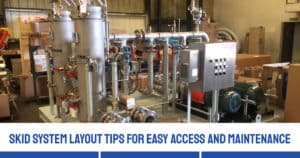Proper pump performance is essential for efficient and reliable operation. Regular testing of pump equipment ensures it functions optimally. With testing you can also identify potential issues before they escalate. Here are five crucial types of pump tests you should perform to maintain peak performance and avoid costly downtime:
1. Performance Testing
Performance testing is fundamental to evaluating a pump’s efficiency and overall operational capacity. These tests measure the pump’s flow rate, head (pressure), and power consumption at different operating points. By comparing these measurements to the manufacturer’s specifications, you can determine if the pump is performing as expected.
Conducting performance tests identifies inefficiencies, such as worn impellers or internal leakage. Regular performance testing can reveal gradual declines in performance, allowing for timely maintenance or adjustments to restore optimal operation.
2. Hydrostatic Testing
Hydrostatic testing is performed to check the structural integrity and leak tightness of a pump and its associated piping. During this test, the pump and piping are filled with water or another non-compressible fluid and pressurized to a specified level. This pressure is maintained for a certain period to observe any potential leaks or weaknesses in the system.
Hydrostatic testing is essential to ensure the safety and reliability of the pump system, particularly in high-pressure applications. It helps detect flaws in the pump casing, seals, and connections that could lead to catastrophic failures if left unaddressed.
3. NPSH Testing
Net positive suction head (NPSH) testing is crucial for preventing cavitation, which can cause significant damage to a pump. This test measures the NPSH available (NPSHa) and the NPSH required (NPSHr) to ensure the pump operates within safe limits.
Cavitation occurs when the pressure in the pump drops below the vapor pressure of the fluid. This causes vapor bubbles to form and implode, damaging the impeller and other components. NPSH testing verifies that the system design and operating conditions provide adequate suction head to avoid cavitation.
Regular cavitation testing helps identify potential issues before they lead to significant damage. By ensuring the pump operates within safe pressure limits, you can maintain the integrity of the pump components, reduce maintenance costs, and extend the equipment’s lifespan. Early detection and correction of NPSH inconsistencies and cavitation conditions are crucial for preserving pump performance and reliability in demanding industrial environments.
4. Vibration Analysis
Vibration analysis is a critical test for detecting mechanical issues within a pump. Excessive vibration can indicate problems such as imbalance, misalignment, bearing wear, or cavitation. By using accelerometers and other vibration-sensing equipment, you can monitor the vibration levels of the pump during operation.
Regular vibration analysis pinpoints issues early to prevent severe damage and costly repairs. It also ensures the pump operates smoothly, reducing the risk of unexpected failures and extending the lifespan of the equipment.
5. Electrical Testing
Electrical testing involves checking the pump’s motor and electrical components to ensure they are functioning correctly and efficiently. This includes insulation resistance testing, motor winding resistance testing, and checking for proper voltage and current levels.
Regular electrical testing can identify issues such as insulation degradation, electrical imbalances, and other motor-related problems. Addressing these issues promptly can prevent motor problems and ensure a safer, more energy-efficient operation.
Having a proactive approach to pump testing can enable you to improve operational efficiency, reduce downtime and repair costs, and extend the lifespan of your pump equipment. For all your pump management, testing, and system optimization needs, contact the team at DXP Quadna today.





